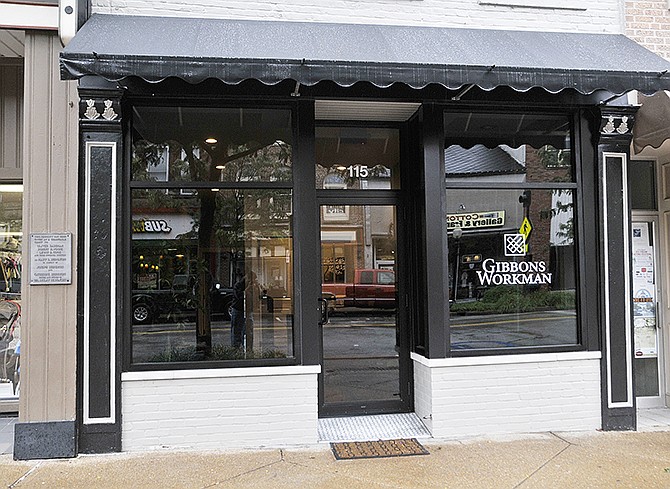Another piece of the Capital City's downtown charm has been restored at 115 E. High St.
The Historic City of Jefferson has recognized the facade improvements by owner Jewell Patek with the July Golden Hammer award.
Using the city's commercial facade improvement program, 115 E. High St. is now "beautifully restored to preserve and enhance the architectural character of downtown Jefferson City," said selection committee chairman Laura Ward.
Many downtown property owners have made similar contributions to the century-old streetscape, she said.
"Bringing back these historic structures, which are soaked in history for the unique roles that they have served in our community, displays that we are respectful of our city's humble beginnings," Ward said.
According to researcher Deborah Goldammer, the lot originally was owned by John and Ann Edwards, who later sold to Josiah Lamkin. The Lamkin family held the property from 1843-1923.
Lamkin was born 1810 in Kentucky and married Margaret with whom he had six children. He moved to Jefferson City and purchased the property in 1847. At his death in 1891, Margaret and their children William, Rachel and Emeliers became co-owners.
Goldammer concludes the Lamkins built a building there, prior to 1880, when the census lists Martin Courtright as a bar keeper at the location.
By 1900, the site was occupied by the R. Hemmel Staple and Fancy Groceries store, with Richard and George Hemmel living above.
In 1908, Amelia and Olga Eisenstein, a mother and daughter, operated the Eisenstein's Dry Goods store while living in the apartment above. They would operate a series of businesses at this location, including Leader Clothing, Furnishing and Shoes in 1915, Olga Eisenstein Ladies' Ready-to-Wear through 1935, Lido Hat Shop in 1938 and Value Hat Company until 1953.
Amelia Eisenstein, a Prussian immigrant, likely learned the trade from her husband, Jacob, who had been a dry good merchant in Guthrie. When she was widowed, three of their five children moved with her above 115 E. High St. Through the next few years, different family members would live in the apartment and work in the store.
The Tipton Jewelry Shop moved into the storefront by 1955.
Amelia Eisenstein's son Walter sold the property in 1961 to Marvin and Bernice Kaiser, who leased to Thomas Gilstrap and Fred Betts, gutting the first floor walls and fixtures. Goldammer suspects that is when it was first used as a tavern.
Several incarnations are listed in city directories through the next couple of decades until Mortimer Kegley's opened in 1981 until this year.

